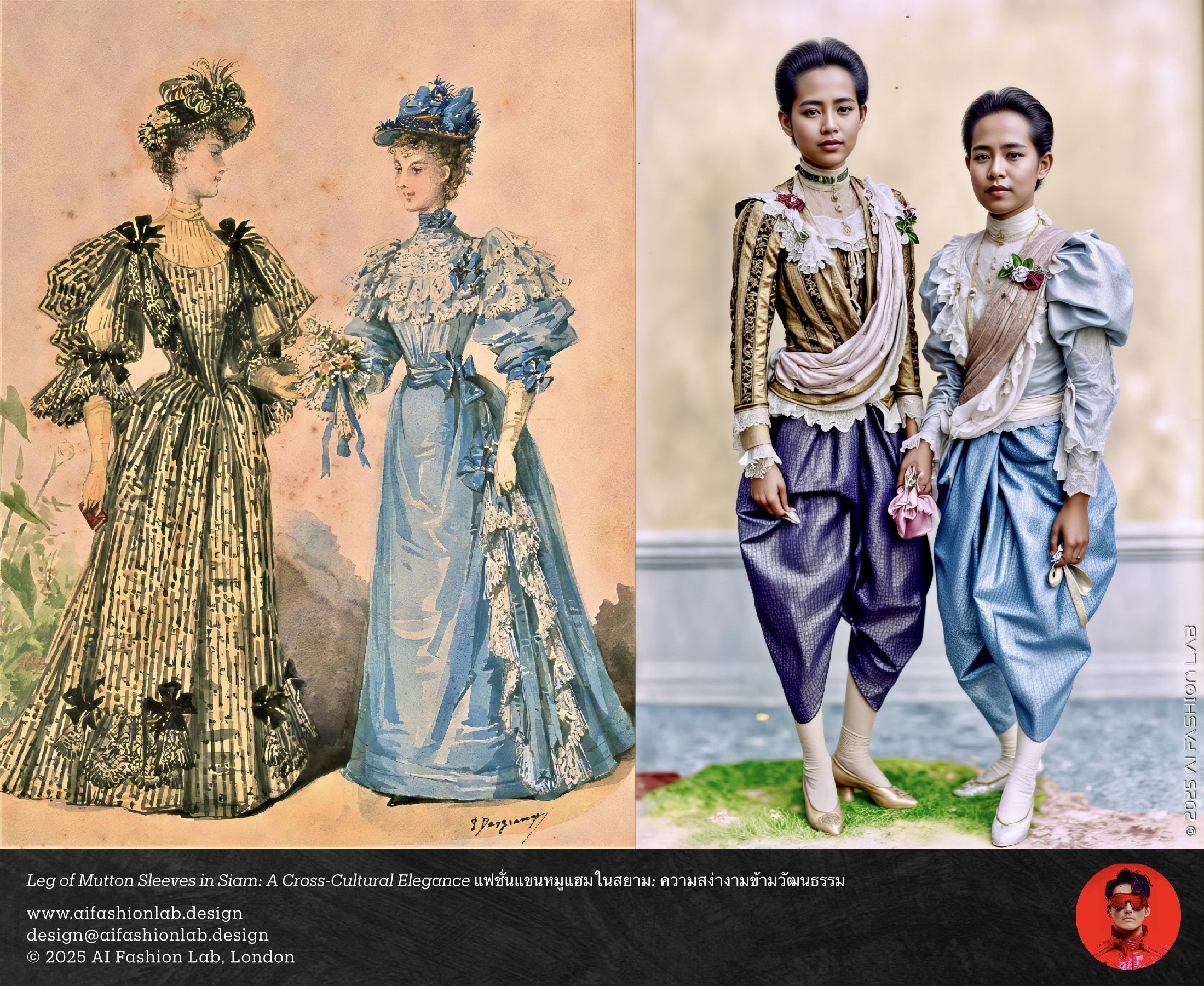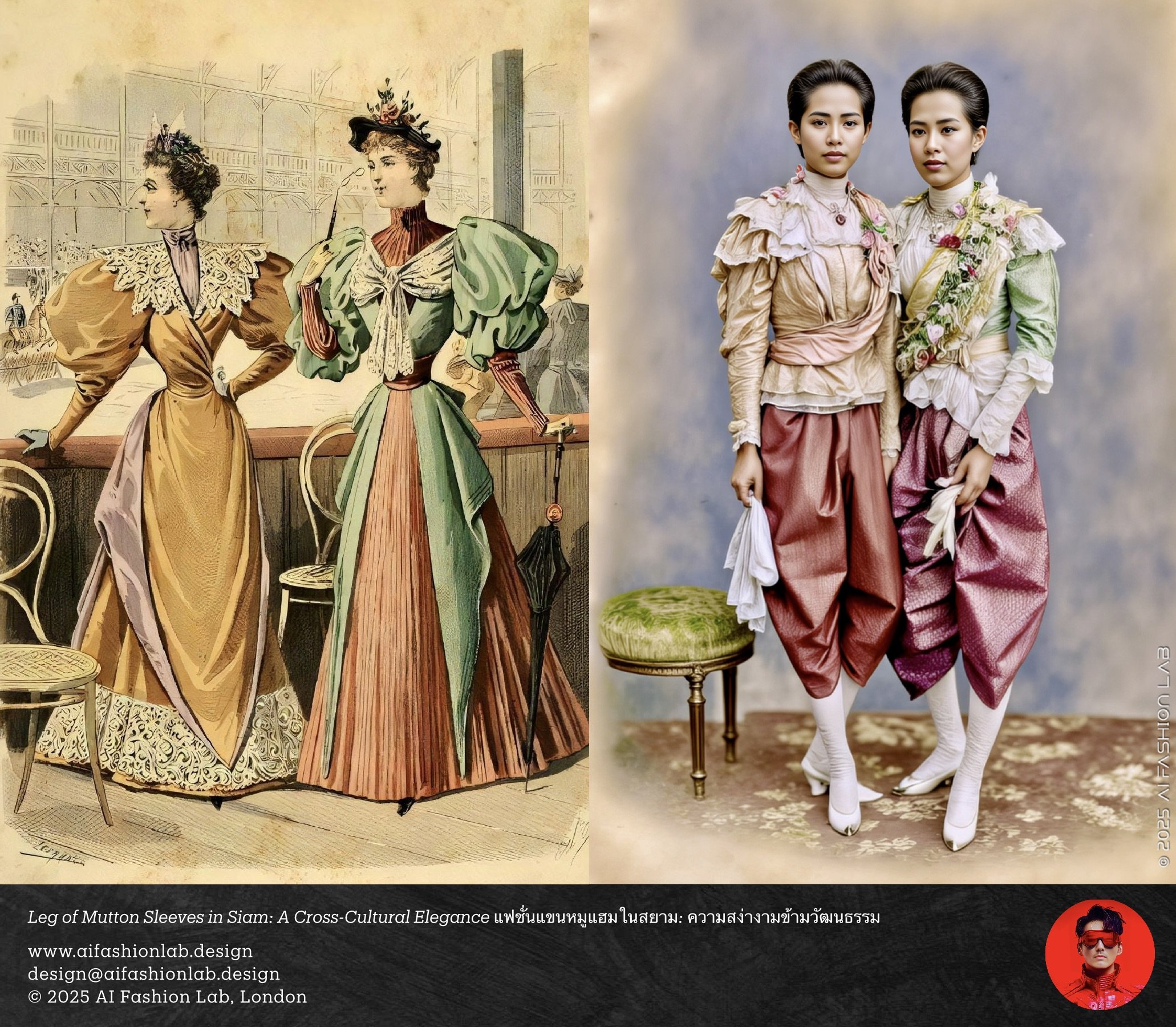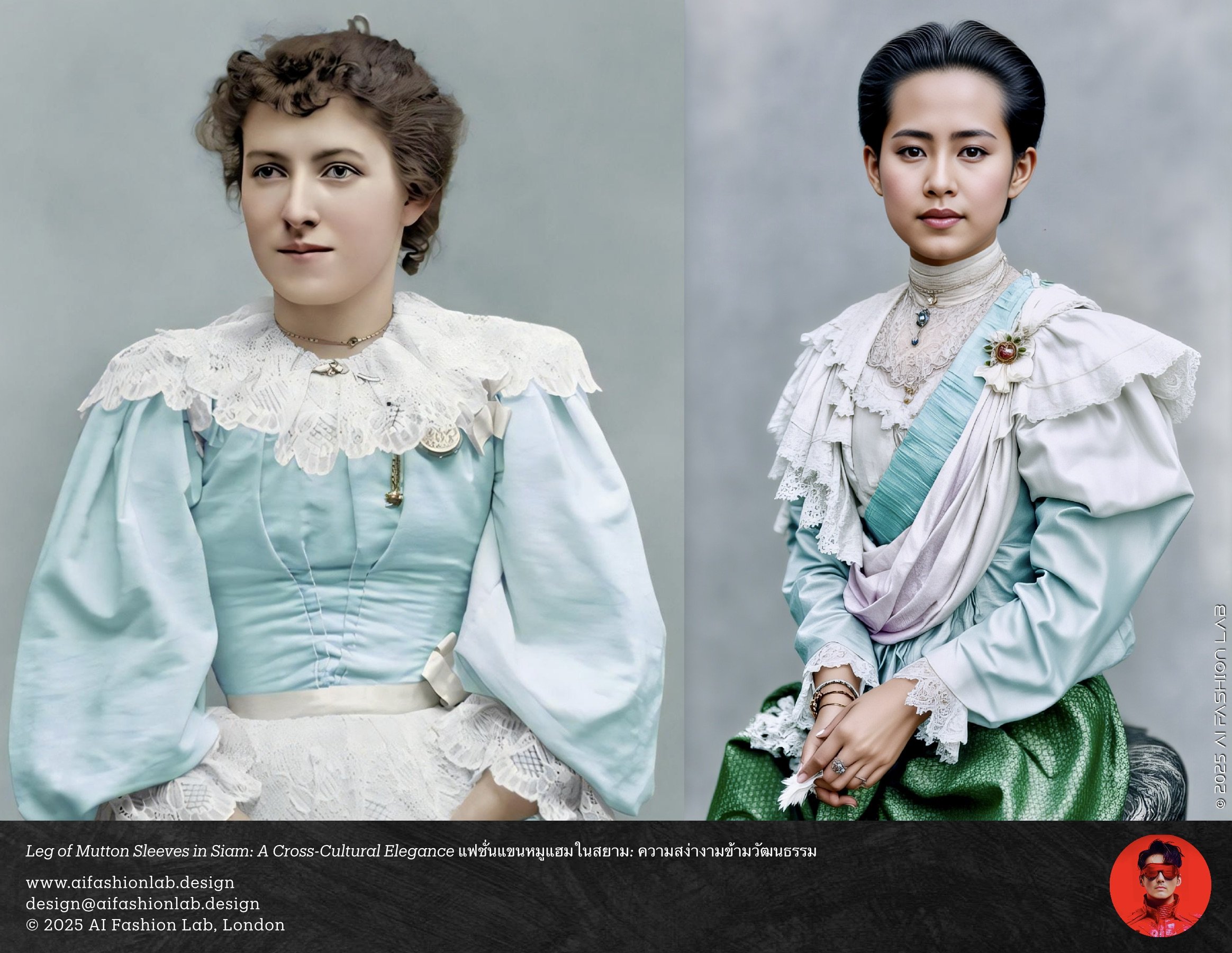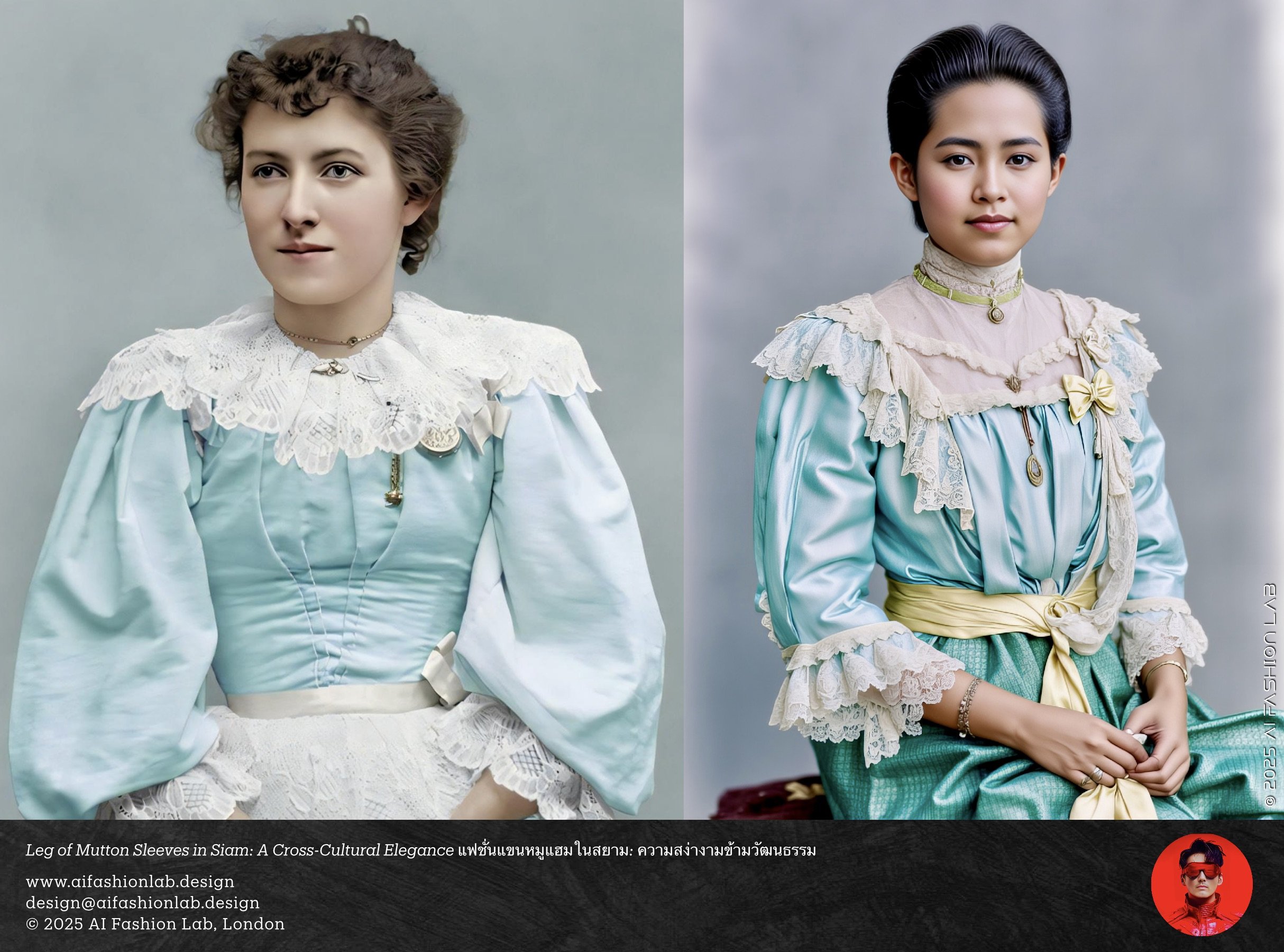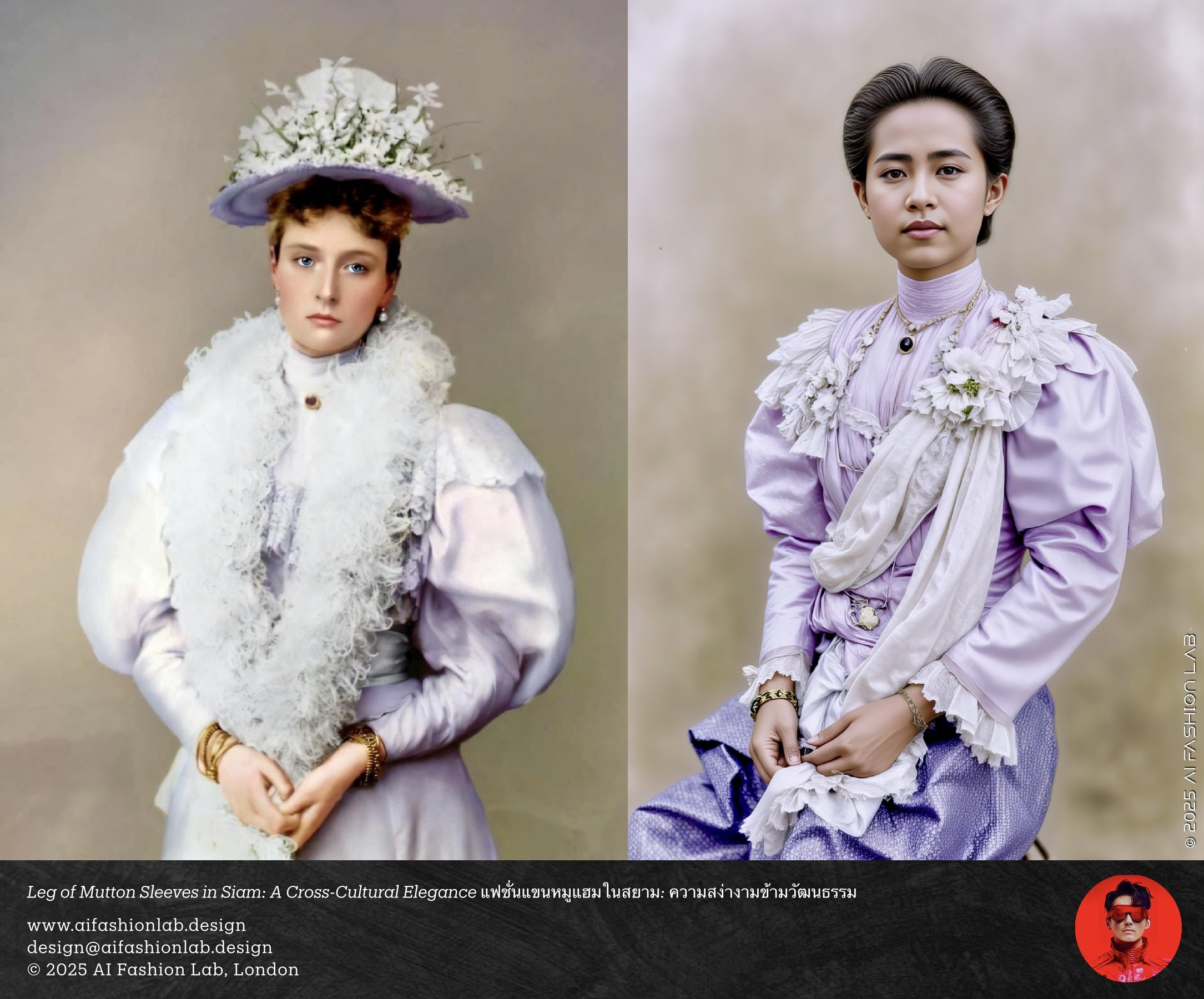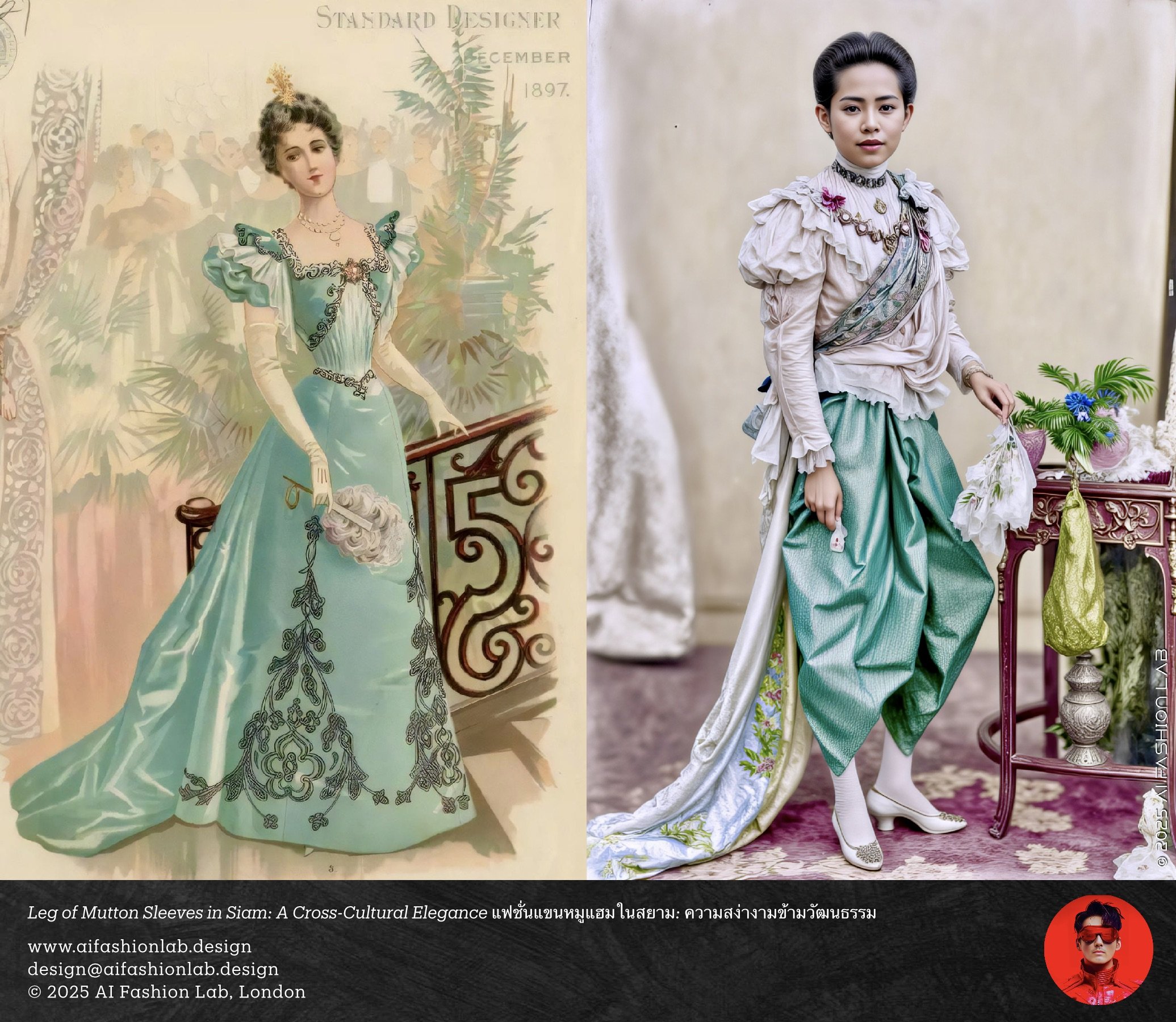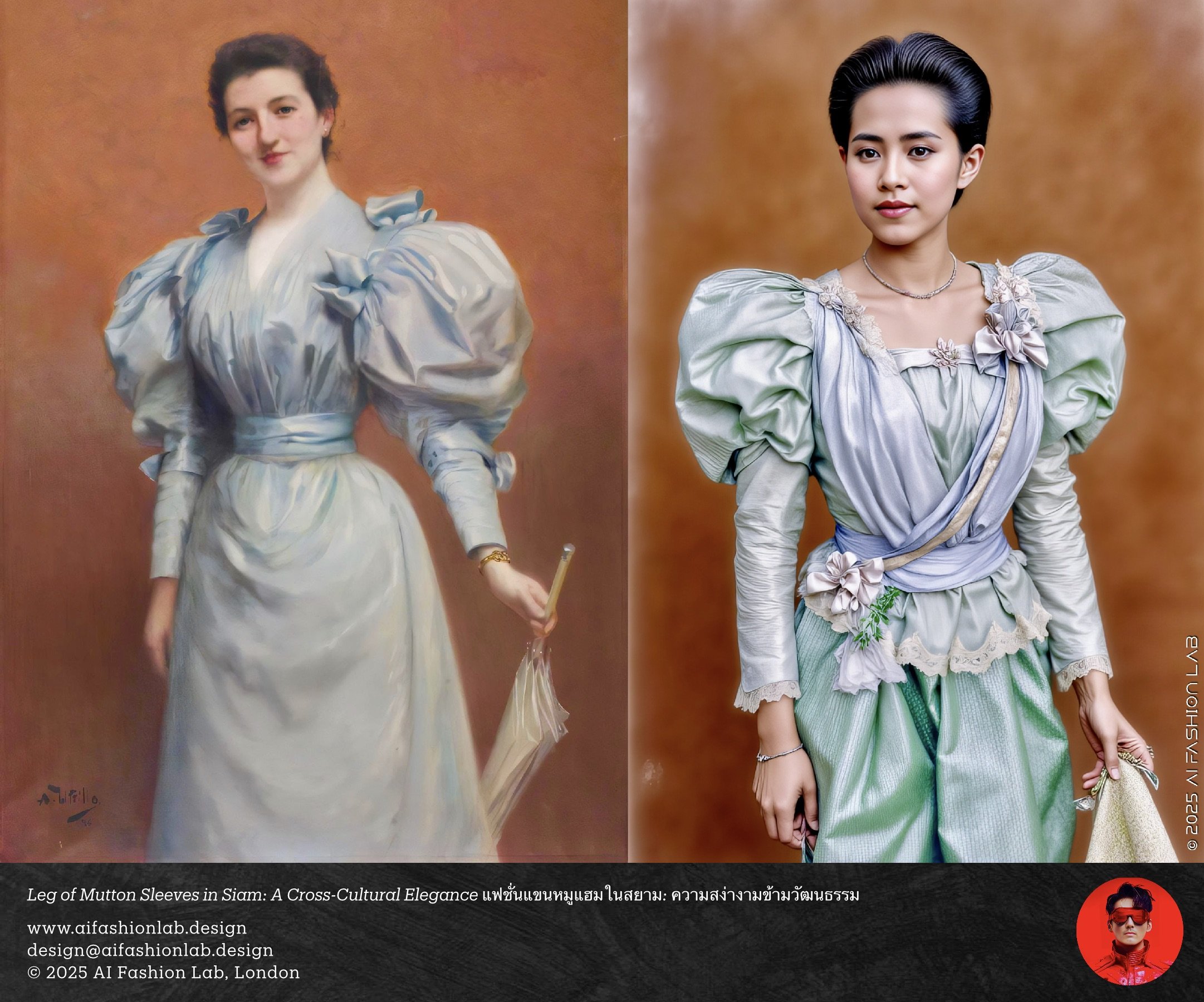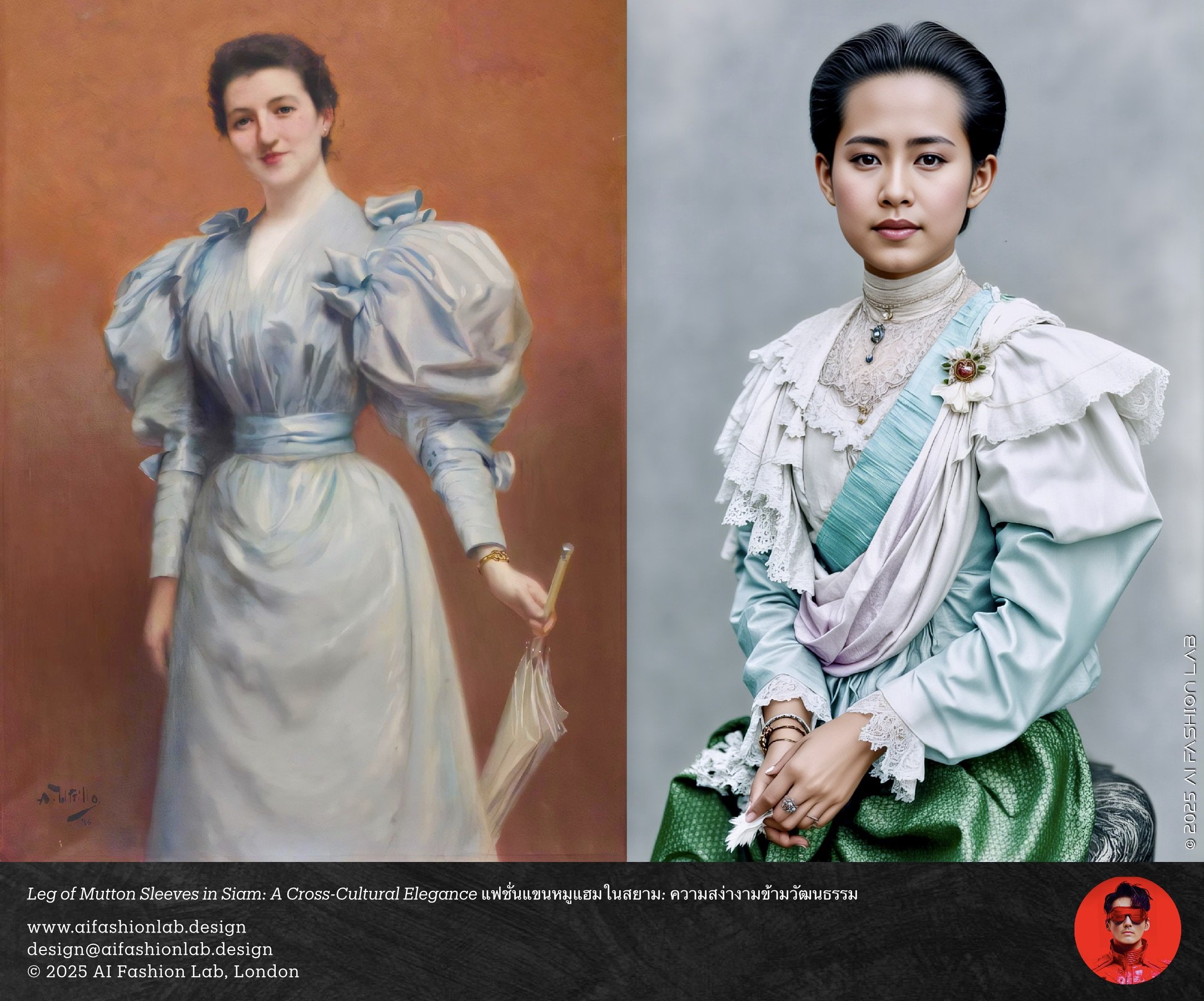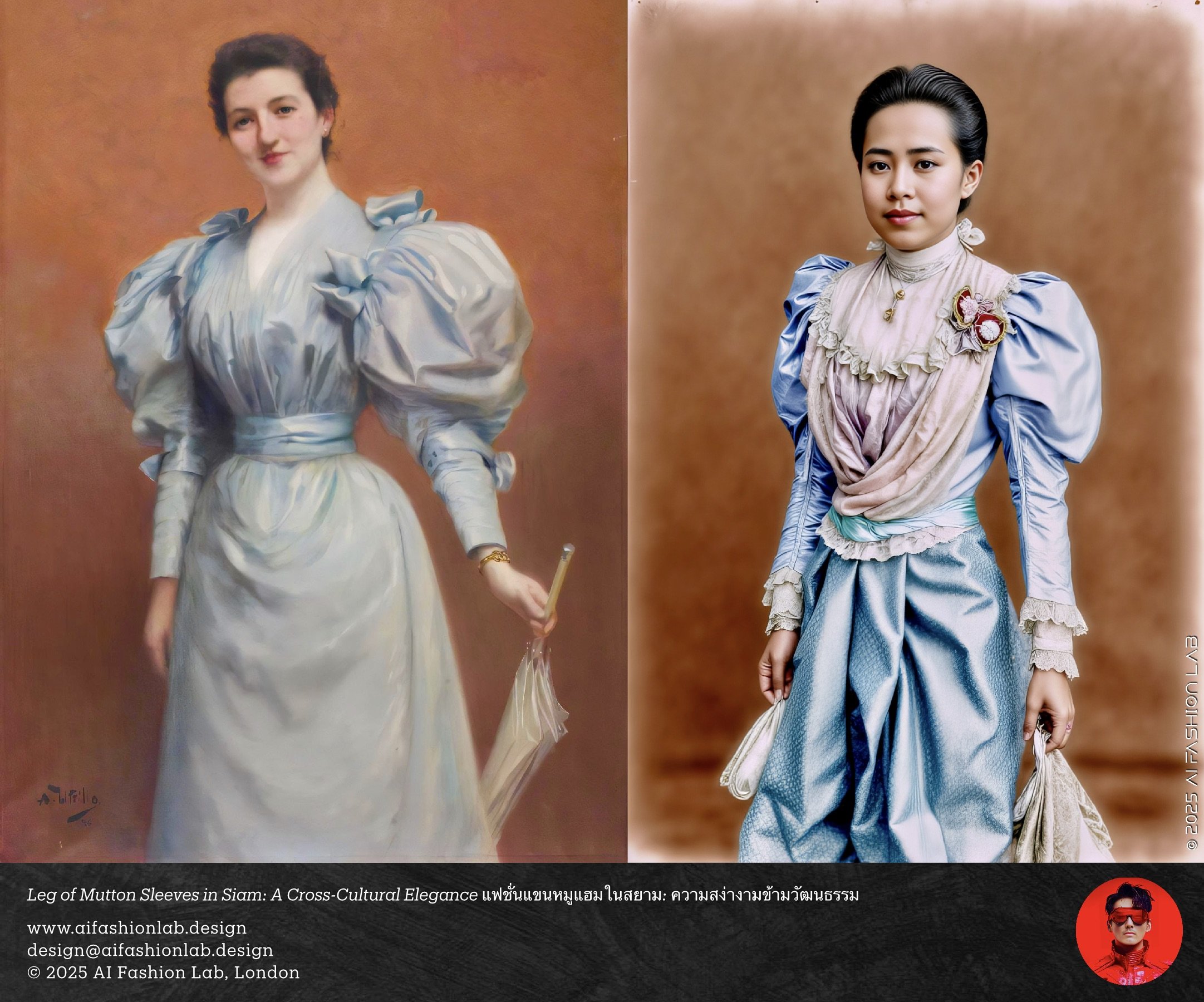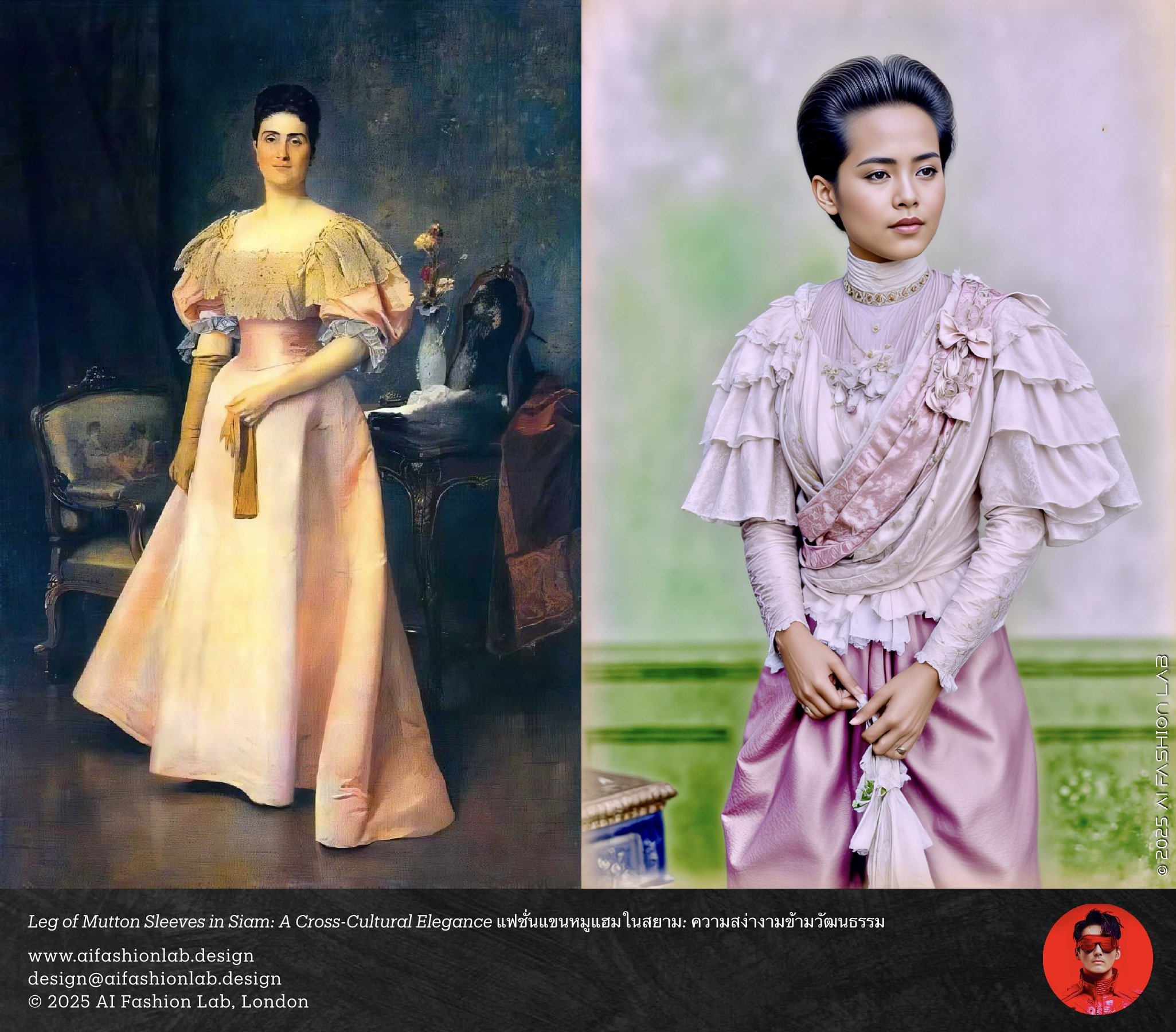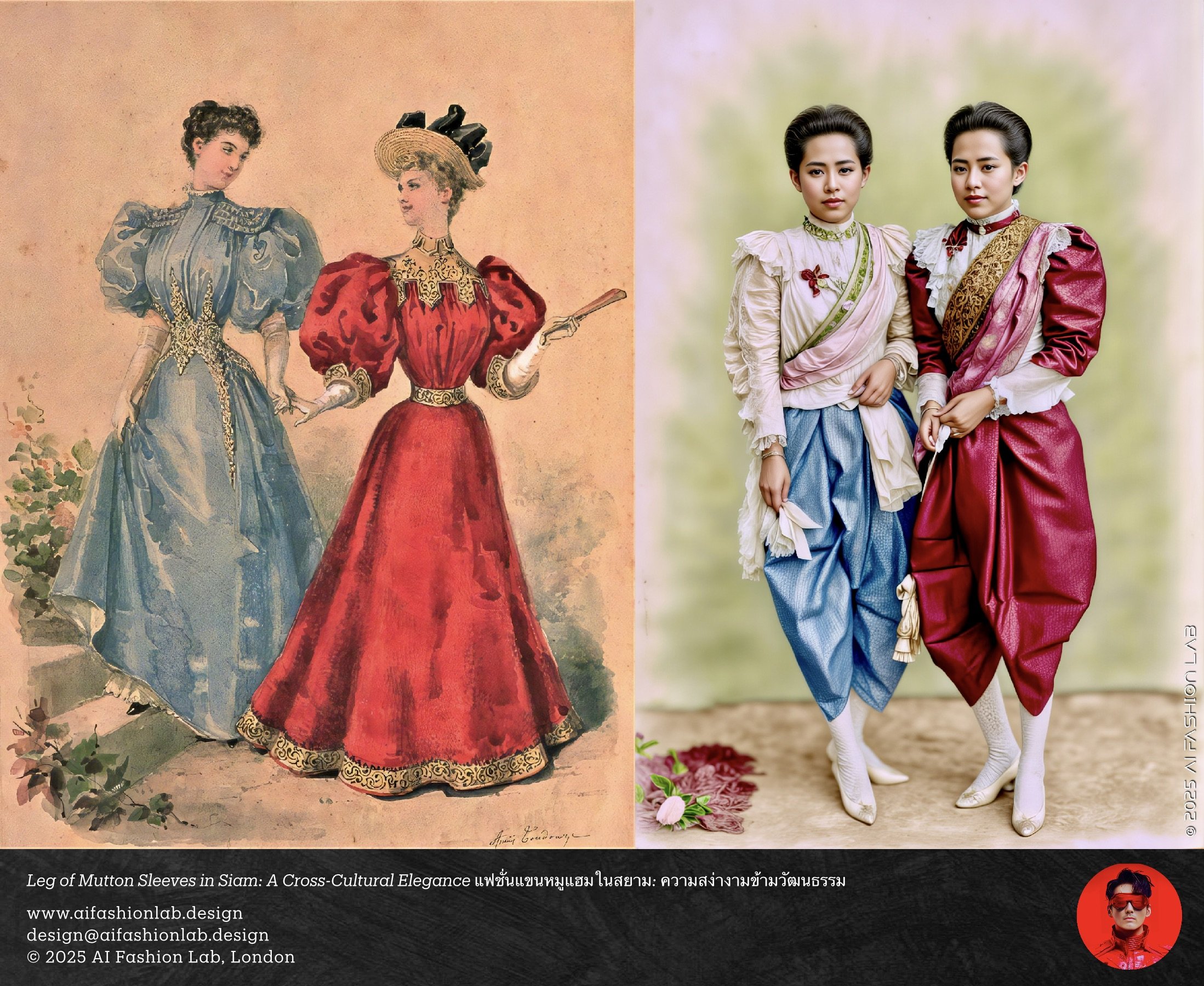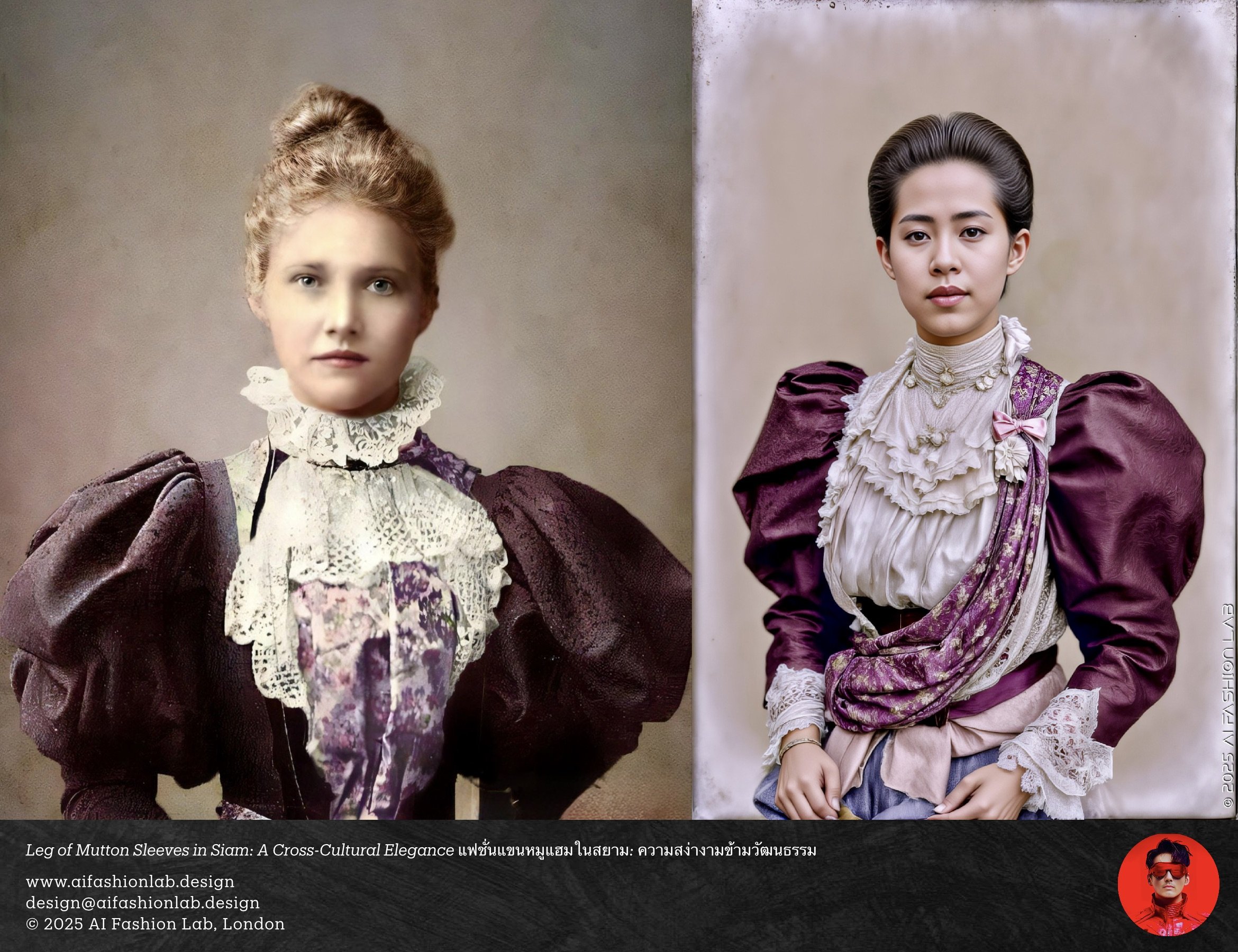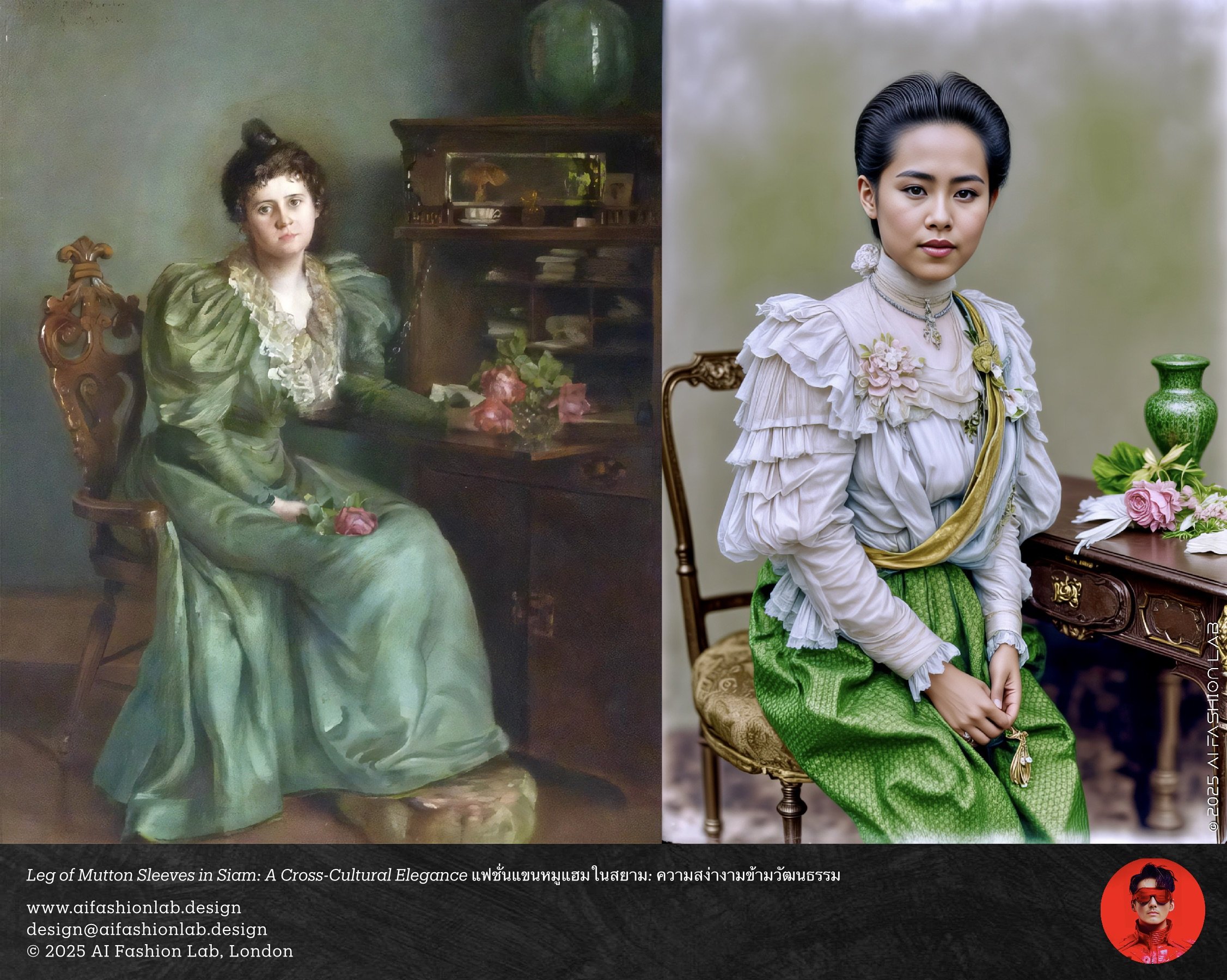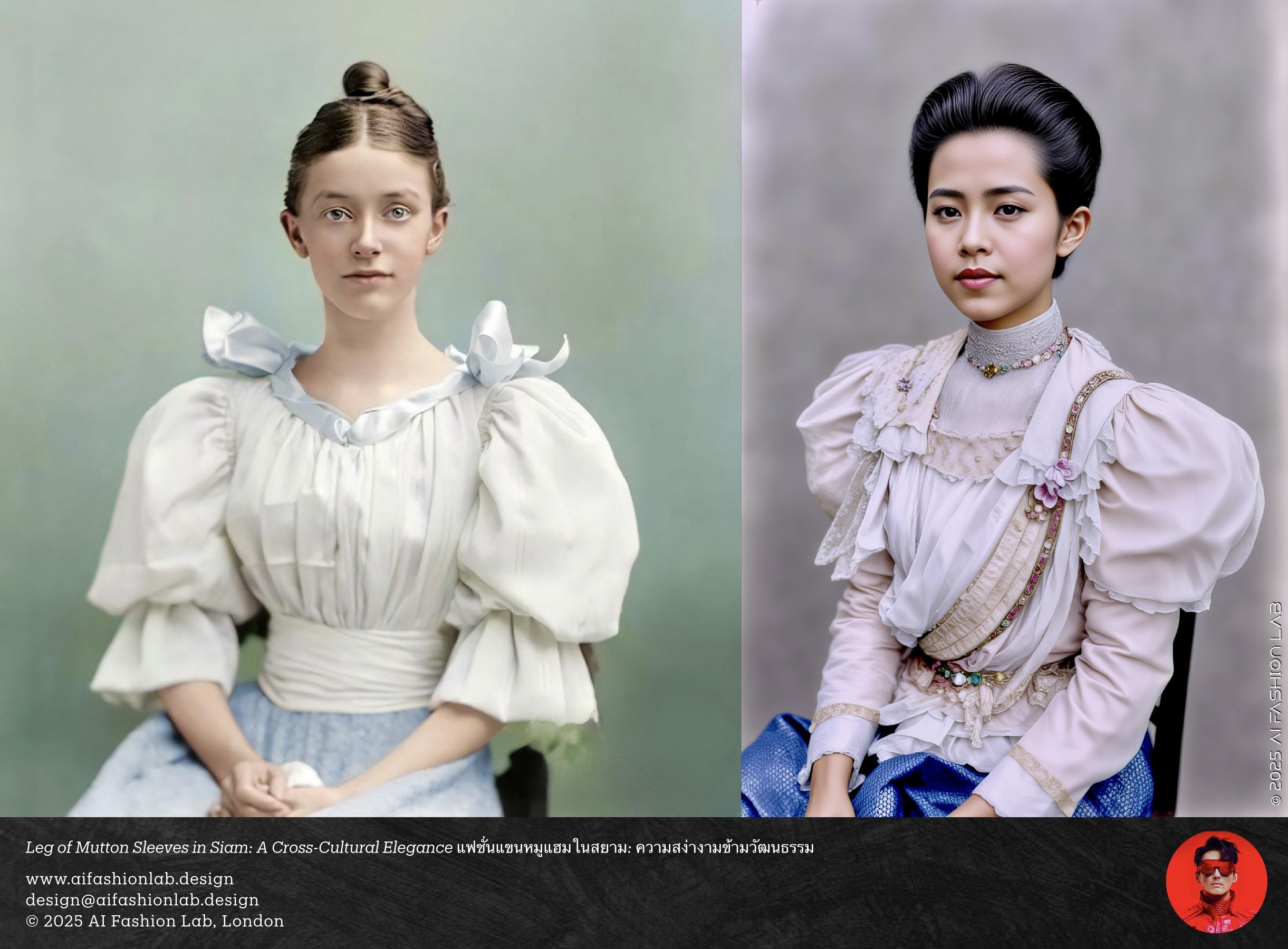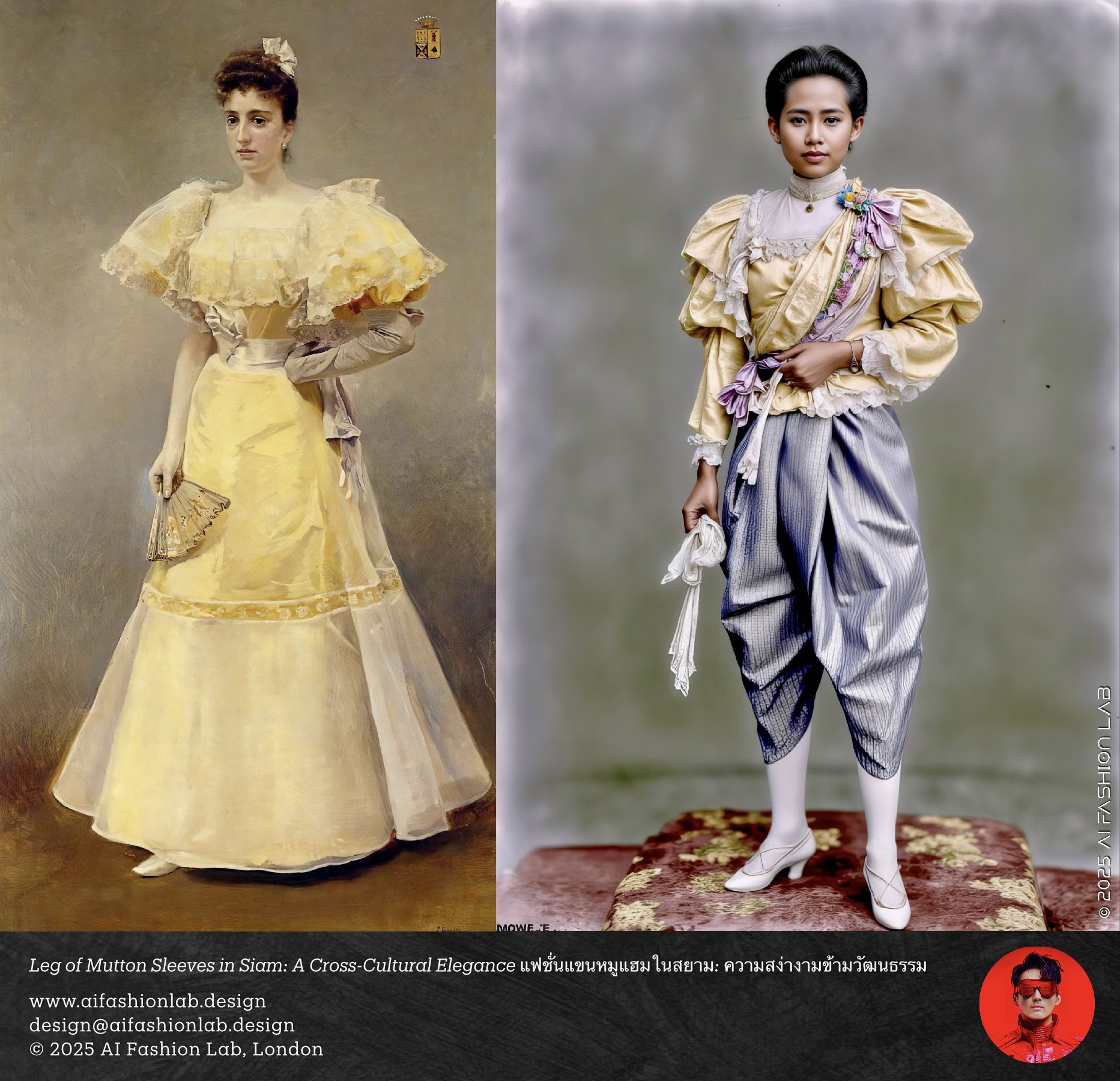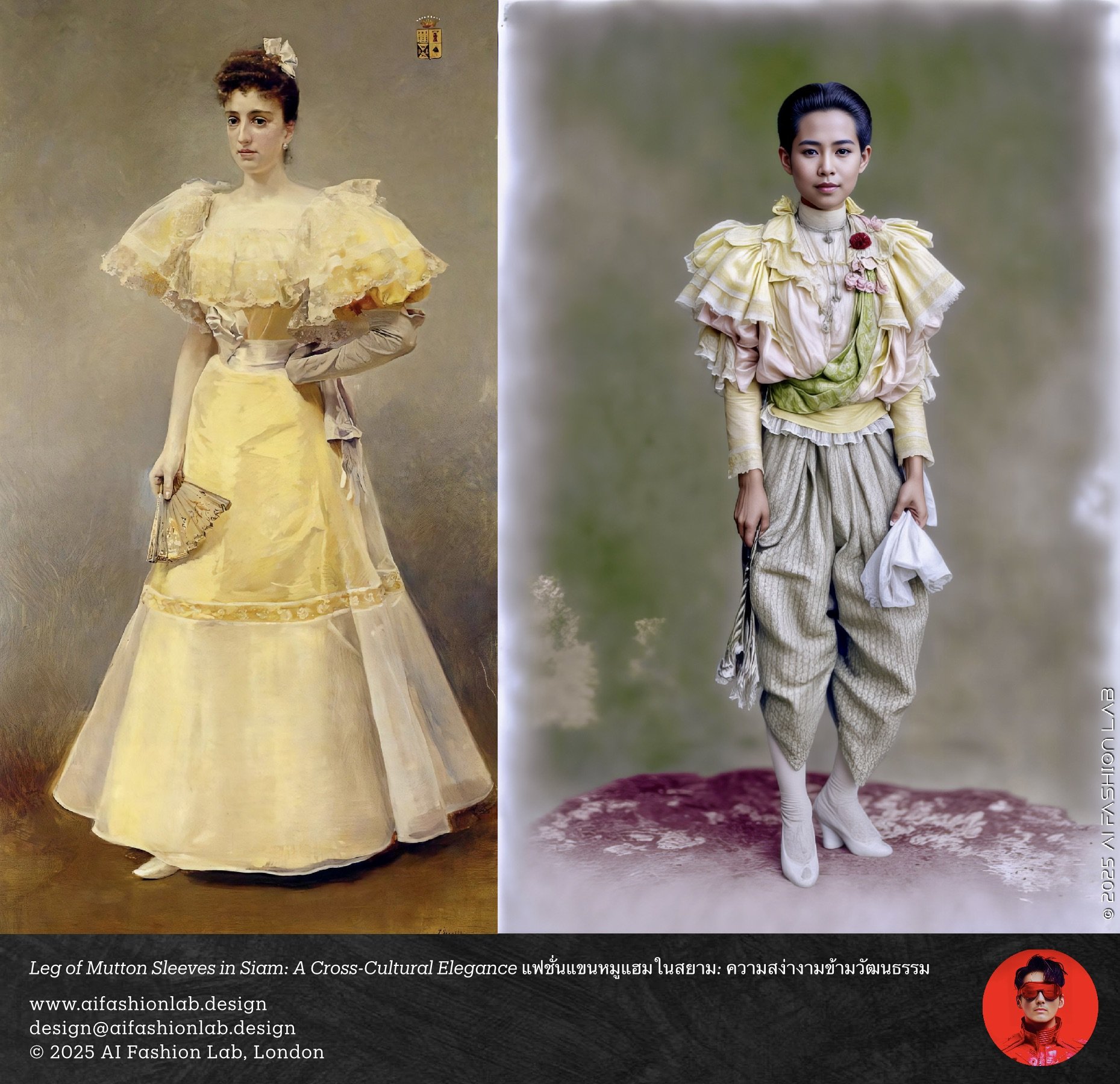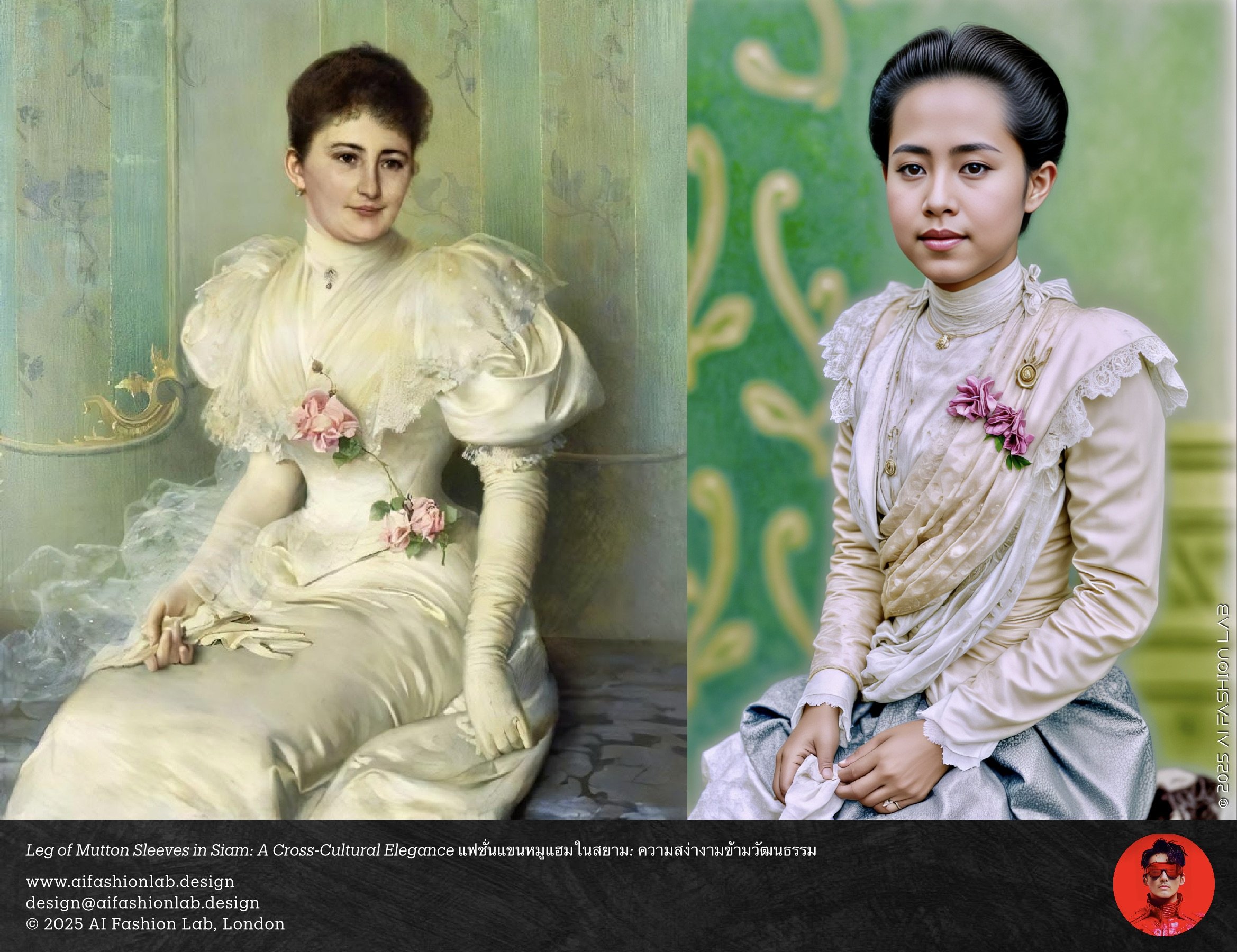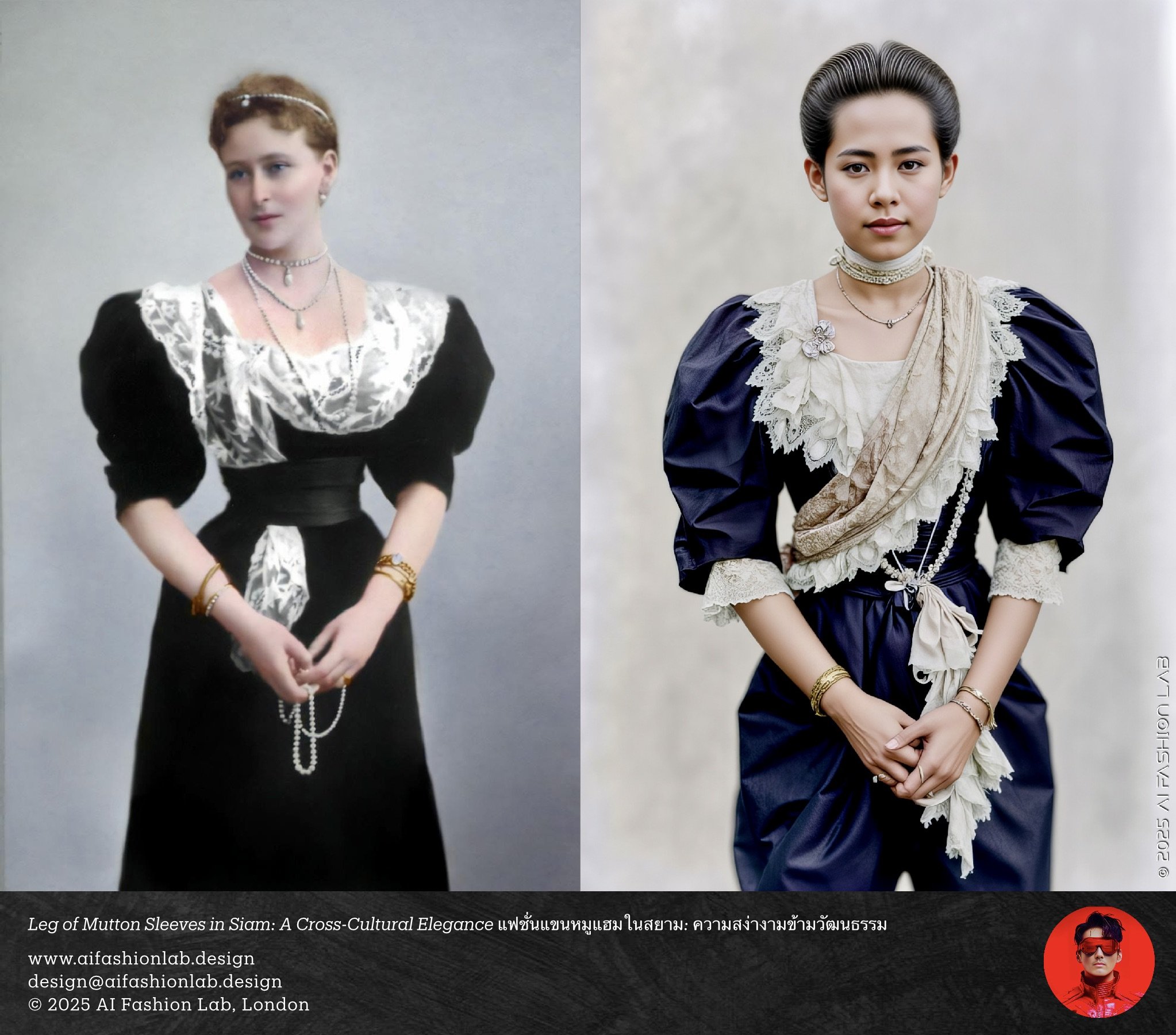Victorian Leg of Mutton Sleeves and Their Influence on the Thai Royal Court in the 1890s
Royal women combined Victorian-style blouses featuring leg of mutton sleeves with traditional draped trousers (known in Thailand as chongkraben, a style closely resembling the Indian dhoti). This fusion created ensembles that were both sophisticated and culturally resonant. The dramatic sleeves added visual splendour and stature, while the traditional trousers maintained the wearer’s connection to Siamese identity.
Victorian Leg of Mutton Sleeves and Their Influence on the Thai Royal Court in the 1890s
The Leg of Mutton Sleeve: A Symbol of Victorian Fashion
The leg of mutton sleeve emerged as a quintessential feature of late 19th-century Victorian fashion, encapsulating the era's emphasis on dramatic silhouettes and refined elegance. This distinctive style, characterised by voluminous puffed sleeves that gradually tapered to a snug fit at the wrist, reached its zenith during the 1890s (1890–1899). Drawing inspiration from the Romantic period of the 1830s, the leg of mutton sleeve resurfaced with renewed popularity, becoming a defining element of women's attire during the Victorian era's final decade.
The 1890s marked the exclusive prominence of this sartorial innovation, with its popularity peaking in 1895. By the mid-decade, the sleeves had expanded to their most exaggerated proportions, commanding attention as a hallmark of high fashion. Typically paired with tightly corseted bodices and A-line skirts, this silhouette accentuated the hourglass figure, epitomising the Victorian ideals of femininity and opulence.
The Integration of Western Fashion into the Thai Royal Court
Under the reign of King Rama V (King Chulalongkorn), Siam (now Thailand) underwent extensive modernisation, including the adoption of cultural practices and aesthetics from the West. This Western influence extended to sartorial traditions, particularly within the all-female inner court. Members of the inner court embraced elements of Victorian fashion, seamlessly blending these styles with traditional Thai attire to create a unique hybrid aesthetic. The leg of mutton sleeve became a prominent feature of courtly fashion, symbolising a synthesis of modernity and cultural heritage.
It is plausible that King Rama V’s first royal tour of Europe in 1897 contributed to the dissemination of this fashion trend within the royal court. The king may have brought back clothing inspired by European fashions or commissioned garments as gifts for the inner court, reflecting the prevailing styles of the late Victorian period. Such exchanges not only exemplified Siam's openness to international influence but also underscored the adaptability of its cultural elite in integrating foreign elements with indigenous practices.
Royal women combined Victorian-style blouses featuring leg of mutton sleeves with traditional draped trousers (known in Thailand as chongkraben, a style closely resembling the Indian dhoti). This fusion created ensembles that were both sophisticated and culturally resonant. The dramatic sleeves added visual splendour and stature, while the traditional trousers maintained the wearer’s connection to Siamese identity. These garments were typically crafted from opulent silks and often featured intricate embroidery, showcasing a harmonious interplay between Western design principles and Thai craftsmanship.
Revitalising Historical Fashion through AI
To explore and preserve this intriguing fusion of Victorian and Thai fashion, I undertook a project leveraging AI technology to recreate the sartorial splendour of the 1890s Thai royal court. Using archival photographs of royal women as a foundation, I meticulously colourised these images to reveal the vivid hues and intricate details characteristic of the period's attire.
These enhanced visuals served as a dataset for AI modelling, enabling the simulation of Victorian-era silhouettes with a distinctly Thai interpretation. The results vividly captured the vibrant textiles, ornate embellishments, and architectural grandeur of leg of mutton sleeves paired with traditional elements, offering a nuanced glimpse into this historical period of cross-cultural fashion exchange.
Conclusion: A Legacy of Cultural Synthesis
The leg of mutton sleeve represents a brief yet impactful chapter in the history of Victorian fashion, encapsulating the era's grandeur and artistic innovation. Its influence on the Thai royal court during the 1890s highlights the dynamic interplay between Western and Eastern aesthetics, exemplifying fashion as a medium of cultural dialogue. Through the integration of advanced technologies such as AI, we are now able to revitalise these historical styles, preserving their legacy and offering fresh perspectives on their significance for contemporary audiences.
แขนหมูแฮมในยุควิกตอเรียและอิทธิพลต่อราชสำนักไทยในช่วงทศวรรษ 1890
แขนหมูแฮม: สัญลักษณ์แห่งแฟชั่นยุควิกตอเรีย
แขนหมูแฮมถือเป็นหนึ่งในเอกลักษณ์สำคัญของแฟชั่นยุคปลายศตวรรษที่ 19 ซึ่งสะท้อนถึงความงดงามและความประณีตของยุควิกตอเรีย ลักษณะเด่นของแขนหมูแฮมคือความพองโตบริเวณต้นแขนที่ค่อย ๆ แคบลงจนแนบชิดที่ข้อมือ ซึ่งช่วยสร้างภาพเงา (silhouette) ที่ดูโดดเด่นและสง่างาม แขนหมูแฮมได้รับแรงบันดาลใจจากแฟชั่นยุคโรแมนติกในทศวรรษ 1830 ก่อนกลับมาเป็นที่นิยมอีกครั้งในยุควิกตอเรีย
ช่วงทศวรรษ 1890 (พ.ศ. 2433–2442) แขนหมูแฮมถือเป็นแฟชั่นที่โดดเด่นเพียงแค่ทศวรรษเดียว โดยเฉพาะในปี ค.ศ. 1895 (พ.ศ. 2438) แขนเสื้อได้พัฒนาให้มีความพองโตที่สุด ซึ่งสะท้อนถึงความงดงามและความหรูหราของแฟชั่นในยุคนั้น โดยแขนหมูแฮมมักจับคู่กับเสื้อคอร์เซ็ตที่รัดแน่นและกระโปรงทรงเอไลน์ สร้างภาพลักษณ์ที่เน้นส่วนเว้าส่วนโค้งตามอุดมคติของความงามในยุควิกตอเรีย
การผสมผสานแฟชั่นตะวันตกเข้าสู่ราชสำนักไทย
ในสมัยรัชกาลที่ 5 (พระบาทสมเด็จพระจุลจอมเกล้าเจ้าอยู่หัว) ประเทศสยามอยู่ในช่วงของการปรับตัวเข้าสู่ความทันสมัย รวมถึงการรับวัฒนธรรมและแฟชั่นตะวันตกเข้ามา อิทธิพลเหล่านี้ขยายไปถึงการแต่งกายในราชสำนักฝ่ายใน ซึ่งสมาชิกในฝ่ายในได้ปรับใช้แฟชั่นจากตะวันตกเข้ากับเครื่องแต่งกายไทยแบบดั้งเดิมจนเกิดเป็นสไตล์ที่เป็นเอกลักษณ์ แขนหมูแฮมกลายเป็นจุดเด่นของแฟชั่นในราชสำนัก ซึ่งแสดงถึงการผสมผสานระหว่างความทันสมัยและมรดกทางวัฒนธรรม
มีความเป็นไปได้ว่าการเสด็จประพาสยุโรปครั้งแรกของรัชกาลที่ 5 ในปี ค.ศ. 1897 (พ.ศ. 2440) มีส่วนสำคัญต่อการนำแฟชั่นแขนหมูแฮมเข้าสู่ราชสำนักไทย พระองค์อาจทรงนำแรงบันดาลใจจากแฟชั่นยุโรปกลับมาหรือสั่งตัดเสื้อผ้าสำหรับพระราชทานแก่ฝ่ายใน ซึ่งสะท้อนถึงความนิยมของแฟชั่นในยุคนั้น
สตรีในราชสำนักฝ่ายในได้ผสมผสานเสื้อสไตล์วิกตอเรียที่มีแขนหมูแฮมเข้ากับโจงกระเบน จนเกิดเป็นการแต่งกายที่งดงามและมีเอกลักษณ์ แขนเสื้อที่พองโตช่วยเพิ่มความสง่างาม ในขณะที่โจงกระเบนยังคงสะท้อนถึงความเป็นไทย ชุดเหล่านี้มักตัดเย็บจากผ้าไหมชั้นดี พร้อมด้วยการปักลวดลายที่ละเอียดอ่อนซึ่งผสมผสานระหว่างความงดงามแบบตะวันตกและศิลปะไทย
การฟื้นฟูประวัติศาสตร์ด้วย AI
เพื่อรักษาและเฉลิมฉลองการผสมผสานแฟชั่นที่น่าสนใจนี้ ผมได้เริ่มโครงการใช้เทคโนโลยี AI เพื่อสร้างภาพที่สะท้อนถึงความงดงามของราชสำนักไทยในช่วงทศวรรษ 1890 โดยใช้ภาพถ่ายเก่าของสตรีในราชสำนักเป็นฐานข้อมูล ผมได้ทำการปรับแต่งสีภาพเหล่านี้เพื่อเผยให้เห็นถึงความงดงามของผ้าไหมและรายละเอียดของแขนหมูแฮม
ภาพที่ปรับแต่งเหล่านี้ถูกนำมาใช้ในโมเดล AI เพื่อจำลองภาพเงาของแฟชั่นยุควิกตอเรียในรูปแบบที่มีเอกลักษณ์แบบไทย ผลลัพธ์ที่ได้เผยให้เห็นถึงความงดงามของเนื้อผ้า สีสันที่สดใส และรูปทรงของแขนหมูแฮมที่เข้ากันได้อย่างลงตัวกับองค์ประกอบไทยดั้งเดิม
สรุป: มรดกแห่งการผสมผสานทางวัฒนธรรม
แขนหมูแฮมถือเป็นบทที่สั้นแต่ทรงพลังในประวัติศาสตร์แฟชั่นยุควิกตอเรีย ซึ่งสะท้อนถึงความยิ่งใหญ่และนวัตกรรมในยุคนั้น อิทธิพลของแขนหมูแฮมต่อราชสำนักไทยในทศวรรษ 1890 แสดงถึงการแลกเปลี่ยนทางวัฒนธรรมที่น่าสนใจ ซึ่งแฟชั่นกลายเป็นเครื่องมือสำคัญในการเชื่อมโยงความงามจากสองวัฒนธรรม การใช้เทคโนโลยี AI ในการฟื้นฟูแฟชั่นเหล่านี้ช่วยให้เราสามารถอนุรักษ์ความงดงามและเผยแพร่มรดกนี้ให้คนรุ่นหลังได้ชื่นชมต่อไป
#aifashionlab #AI #aiartist #aiart #aifashion #aifashiondesign #aifashionstyling #aifashiondesigner #fashion #fashionhistory #historyoffashion #fashionstyling #fashionphotography #digitalfashion #digitalfashiondesign #digitalcostumedesign #digitaldesign #digitalaiart


